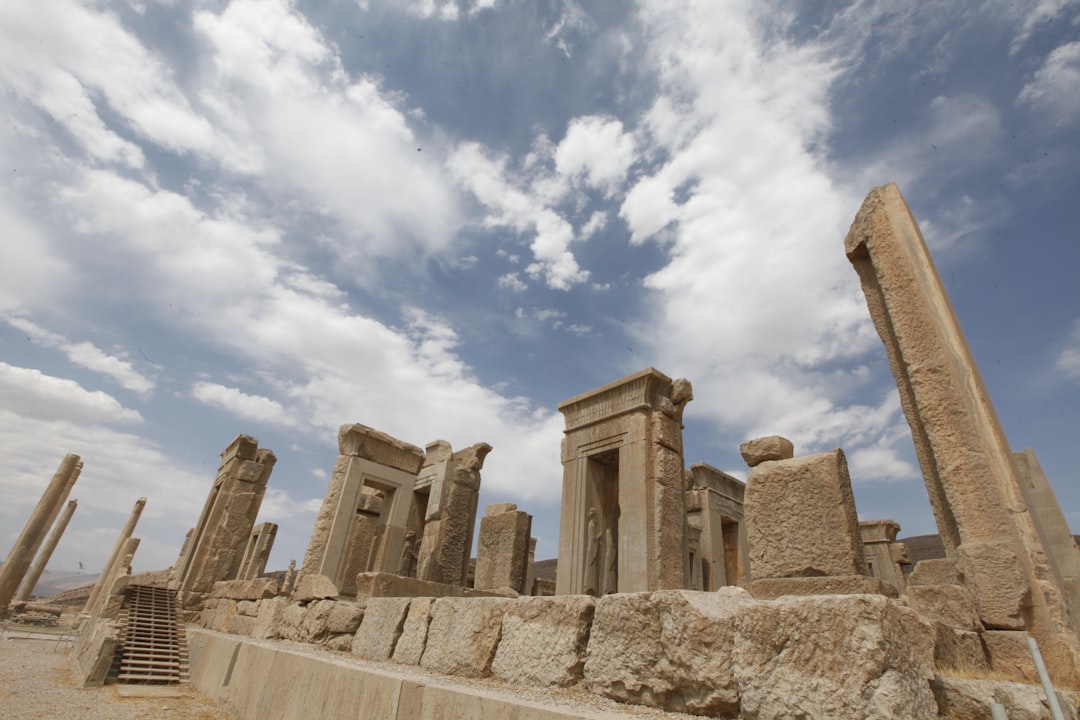The history of Persia, or modern-day Iran, is rich with stories of grandeur, ambition, and transformation. One of the most fascinating chapters in this history is the rise and fall of the Sasanian Empire, Persia's last great ancient dynasty. Spanning over four centuries, the Sasanian Empire not only defined the cultural and political landscape of the ancient Near East but also left an indelible mark on the world’s history.
In this blog post, we’ll explore the rise of the Sasanians, their golden age, and their eventual downfall, as well as their lasting influence on Persian identity and world history.
🌍 The Rise of the Sasanian Empire
The Sasanian Empire was founded in 224 CE by Ardashir I, who overthrew the last Parthian king, Artabanus IV. The Sasanians claimed descent from the ancient Persian kings of the Achaemenid dynasty, particularly from Khosrow I, a legendary figure in Persian history. Ardashir’s rise to power marked the beginning of a new era in Persia, one that would last for over four centuries and shape the cultural, political, and military history of the region.
Ardashir I: The Founder of the Sasanian Dynasty
Ardashir I, who came from a noble family in the region of Persis (modern-day Fars), capitalized on the weaknesses of the Parthian Empire, which was plagued by internal strife and weak leadership. After a series of military victories, Ardashir declared himself the ruler of Persia, establishing a dynasty that would become one of the greatest empires in the ancient world.
One of the key features of the Sasanian Empire’s rise was its claim to legitimate rule, drawing upon the legacy of the Achaemenid Empire. This was crucial in uniting various ethnic groups and regions within Persia, as it reminded the people of a glorious past and gave legitimacy to the new dynasty.
⚔️ The Golden Age of the Sasanians
Under the rule of the early Sasanians, the empire expanded rapidly and developed a sophisticated administrative system. The Sasanian Empire stretched from the Eastern Mediterranean to Central Asia, and from India to the Caucasus, making it one of the largest empires of its time. The Sasanians became the dominant power in the Near East, rivaling the Roman and Byzantine Empires.
Shahanshah: The King of Kings
The Sasanians adopted the title of Shahanshah, meaning “King of Kings,” which reflected their imperial ambitions. Under Shapur I, Ardashir's son and successor, the empire reached new heights of military and cultural achievement. Shapur’s reign (240–270 CE) is especially notable for his victories over the Roman Empire, including the capture of the Roman Emperor Valerian in 260 CE, a remarkable humiliation for the Romans.
But the Sasanian Empire was not just defined by military prowess. The Sasanians were great patrons of art, architecture, and culture. Cities like Ctesiphon, the capital of the empire, flourished, and Persian art, literature, and science became key elements of Sasanian society. The empire was home to scholars, philosophers, and poets who produced works that are still celebrated today.
Religious Tolerance and Zoroastrianism
The Sasanian Empire is often associated with the state religion of Zoroastrianism, which was revitalized during their rule. Zoroastrianism, an ancient Persian religion founded by the prophet Zoroaster (or Zarathustra), was given a central role in Sasanian governance. The Magian priesthood had considerable influence, and the emperor himself was often seen as a divine figure with a special relationship to the gods.
However, the Sasanians were also relatively tolerant of other religions. Christians, Jews, and Buddhists all lived within the empire and had certain freedoms. While tensions between the Sasanian rulers and the Christians of the empire were not uncommon, especially due to political and theological differences with the Roman Empire, the Sasanians were generally pragmatic when it came to religious diversity.
🏛️ The Peak of Sasanian Civilization
The Sasanian Empire’s golden age occurred during the reign of Khosrow I (531–579 CE), known as Khosrow Anushirvan or “Khosrow the Just.” His rule is often regarded as one of the most prosperous and enlightened periods in Persian history. Khosrow I implemented sweeping reforms that enhanced the empire’s legal system, administration, and military structure.
Under his leadership, the Sasanians saw the expansion of trade along the Silk Road and significant advancements in architecture and engineering. The construction of Taq Kasra, the grand palace at Ctesiphon, is a lasting architectural achievement that showcases the empire’s prowess in building.
Khosrow I also made significant strides in education and the promotion of learning. He supported the creation of institutions that preserved Persian cultural heritage, while also welcoming knowledge from other civilizations. His reign also witnessed the compilation of the "Avesta", the sacred texts of Zoroastrianism, and the flourishing of Persian poetry and philosophy.
⚰️ The Decline of the Sasanian Empire
The Sasanian Empire, like many great empires, faced internal and external challenges that ultimately led to its downfall. In the 7th century, a combination of factors—including economic struggles, political instability, and external invasions—began to weaken the empire.
The most significant blow came from the Arab Muslim expansion. In 633 CE, the Sasanians suffered a series of devastating defeats at the hands of the Arab armies. The Battle of Qadisiyyah (636 CE) was a decisive loss that ultimately led to the collapse of the Sasanian state. By 651 CE, the last Sasanian emperor, Yazdegerd III, was defeated and killed, marking the end of the empire.
🏺 The Legacy of the Sasanian Empire
Despite its eventual fall, the legacy of the Sasanian Empire is profound and long-lasting. The Sasanians left a deep cultural and architectural influence on the region. Persian culture, language, and traditions remained strong even after the Arab conquest, and many of the social, cultural, and legal structures established by the Sasanians would influence later empires in the region, including the Islamic Caliphates.
Additionally, the Zoroastrian religion continued to be practiced by Persian communities long after the fall of the Sasanians. The Sasanians also made significant contributions to the development of Persian art, literature, and science, which would inspire later generations.
Moreover, the Sasanian model of governance and statecraft was studied and emulated by later rulers, both in Persia and beyond. The Shahanshah title, used by Persian kings, would continue to be used in later Persian empires, including the Safavid and Qajar dynasties.
✨ Final Thoughts
The Sasanian Empire represents the pinnacle of ancient Persian civilization. From military triumphs and cultural achievements to religious reform and architectural wonders, the Sasanians played a crucial role in shaping not just Persia, but the entire Near East. Their contributions to the fields of law, art, and governance continue to inspire modern societies.
Though the Sasanian Empire eventually fell to the Arab conquests, its influence on the Persian world endured. Today, the legacy of the Sasanians is felt in the cultural identity of Iran and the wider world, making the Sasanian era one of the most significant chapters in world history.





